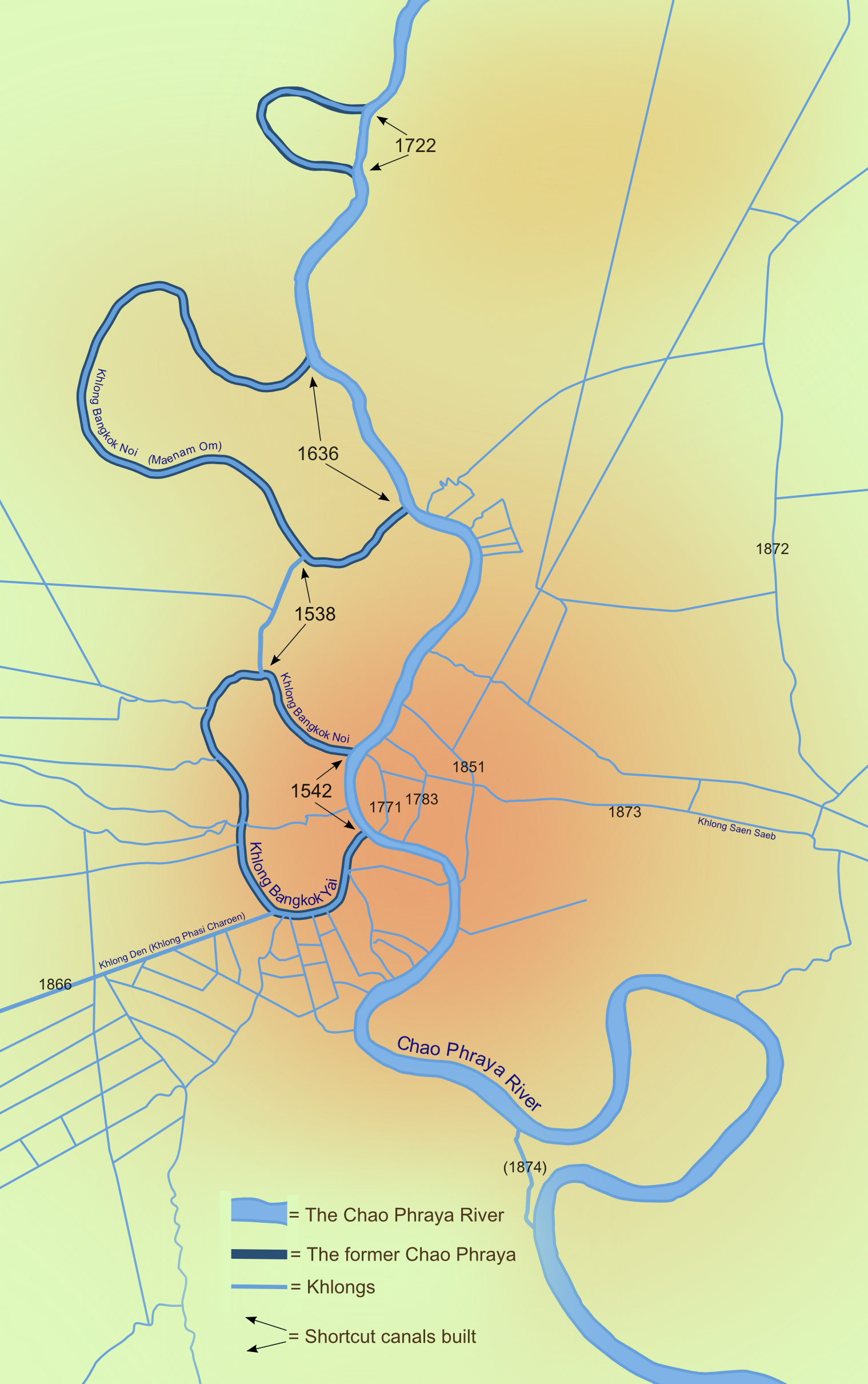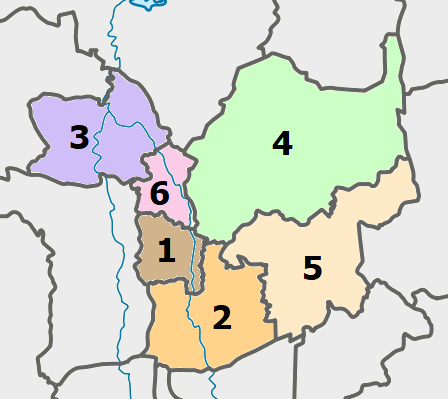|
Chao Phraya
The Chao Phraya ( or ; th, แม่น้ำเจ้าพระยา, , or ) is the major river in Thailand, with its low alluvial plain forming the centre of the country. It flows through Bangkok and then into the Gulf of Thailand. Etymology On many old European maps, the river is named the ''Mae Nam'' (Thai: แม่น้ำ), the Thai word for "river" (literally, "motherly water"). James McCarthy, F.R.G.S., who served as Director-General of the Siamese Government Surveys prior to establishment of the Royal Survey Department, wrote in his account, "''Mae Nam'' is a generic term, ''mae'' signifying "mother" and ''Nam'' "water," and the epithet Chao P'ia signifies that it is the chief river in the kingdom of Siam." H. Warington Smyth, who served as Director of the Department of Mines in Siam from 1891 to 1896, refers to it in his book first published in 1898 as "the Mae Nam Chao Phraya". In the English-language media in Thailand, the name Chao Phraya River is oft ... [...More Info...] [...Related Items...] OR: [Wikipedia] [Google] [Baidu] |
Bangkok
Bangkok, officially known in Thai language, Thai as Krung Thep Maha Nakhon and colloquially as Krung Thep, is the capital and most populous city of Thailand. The city occupies in the Chao Phraya River delta in central Thailand and has an estimated population of 10.539 million as of 2020, 15.3 percent of the country's population. Over 14 million people (22.2 percent) lived within the surrounding Bangkok Metropolitan Region at the 2010 census, making Bangkok an extreme primate city, dwarfing Thailand's other urban centres in both size and importance to the national economy. Bangkok traces its roots to a small trading post during the Ayutthaya Kingdom in the 15th century, which eventually grew and became the site of two capital cities, Thonburi Kingdom, Thonburi in 1768 and Rattanakosin Kingdom (1782–1932), Rattanakosin in 1782. Bangkok was at the heart of the modernization of Siam, later renamed Thailand, during the late-19th century, as the country faced pressures from the ... [...More Info...] [...Related Items...] OR: [Wikipedia] [Google] [Baidu] |
Herbert Warington Smyth
Herbert Warington Smyth (4 June 1867 – 19 December 1943) CMG, FGS, FRGS, was a British traveller, writer, naval officer and mining engineer who served the government of Siam and held several important posts in the Union of South Africa. Early life Known as Warington, he was the elder son of Sir Warington Wilkinson Smyth FRS, Professor of Mining at the Royal School of Mines, and his wife Anna Maria Antonia Story Maskelyne. His younger brother Sir Nevill Maskelyne Smyth won the Victoria Cross at the Battle of Omdurman. He was educated at Westminster School and Trinity College, Cambridge. Career After being an unpaid assistant to the Mineral Adviser to the Office of Woods from 1890 to 1891, he went to Siam. There he was Secretary of the Government Department of Mines from 1891 to 1895 and Director General from 1895 to 1897. He became a Commander of the Order of the White Elephant of Siam and received the Murchison Award of the R.G.S. for journeys in Siam in 1898. In 1898, he w ... [...More Info...] [...Related Items...] OR: [Wikipedia] [Google] [Baidu] |
Khlong Bangkok Noi
250px, Khlong Bangkok Noi near Wat Sri Sudaram Khlong Bangkok Noi ( th, คลองบางกอกน้อย, ; lit 'Small Bangkok Canal') is a '' khlong'' (คลอง; canal) in Bangkok; its name is the origin of the name Bangkok Noi District. The mouth of Khlong Bangkok Noi is located beside Siriraj Piyamaharajkarun Hospital (SiPH) and the former Bangkok Noi railway station (now the location of Thonburi Railway Station Pier). The current flows north through many historical and cultural landmarks, such as Ansorissunnah Royal Mosque, National Museum of Royal Barges, Wat Suwannaram, Thon Buri railway station, Wat Amarintharam, and Wat Si Sudaram, a Thai temple known as the place where the poet Sunthorn Phu studied in his childhood, as well as Wat Bang Oi Chang in Nonthaburi Province, etc. The canal terminates at the confluence with Khlong Om Non and Khlong Bang Yai at the Old Bang Yai Market in Bang Yai District, Nonthaburi Province, along the way, it is also connect ... [...More Info...] [...Related Items...] OR: [Wikipedia] [Google] [Baidu] |
Khlong
A ''khlong'' ( th, คลอง, ), alternatively spelt as ''klong'' () commonly refers to a canal in Thailand. These canals are spawned by the rivers Chao Phraya, Tha Chin, and Mae Klong, along with their tributaries particularly in the low-lying areas of central Thailand. The Thai word ''khlong'' is not limited to artificial canals. Many smaller rivers are referred to as "''khlong''" followed by the name of the stream. Khlongs in Bangkok there are 1,682 canals in Bangkok, totalling 2,604 kilometres in length. Nine canals are primary flood drainage conduits. In years past, the Thai capital was crisscrossed by khlongs, and so gained the nickname "Venice of the East". Khlongs were used for transportation, for floating markets, but also for sewage disposal. Today, most of the khlongs of Bangkok have been filled in, although the Thonburi side of Bangkok (covering areas west of the Chao Phraya River) still retains several of its larger khlongs. Khlong Saen Saep in central Bangk ... [...More Info...] [...Related Items...] OR: [Wikipedia] [Google] [Baidu] |
Chao Phraya Dam
The Chao Phraya Dam ( th, เขื่อนเจ้าพระยา, , ) is a barrage dam in Sapphaya district, Chai Nat province, Thailand. It regulates the flow of the Chao Phraya River as it passes into lower central Thailand, distributing water to an area of in seventeen provinces as part of the Greater Chao Phraya Irrigation Project Greater may refer to: *Greatness, the state of being great *Greater than, in inequality * ''Greater'' (film), a 2016 American film *Greater (flamingo), the oldest flamingo on record * "Greater" (song), by MercyMe, 2014 *Greater Bank Greater Ban .... The dam has sixteen 12.5-metre gates. It was built between 1952 and 1957. References Dams in Thailand Barrages (dam) Dams completed in 1957 1957 establishments in Thailand Buildings and structures in Chai Nat province Buildings and structures on the Chao Phraya River {{asia-dam-stub ... [...More Info...] [...Related Items...] OR: [Wikipedia] [Google] [Baidu] |
Tha Chin River
The Tha Chin river ( th, แม่น้ำท่าจีน, , ) is a distributary of the Chao Phraya river, Thailand. It splits near the province of Chai Nat and then flows west from the Chao Phraya through the central plains, until it empties into the Gulf of Thailand in Samut Sakhon Province. Regional names The Tha Chin river has many regional names. After it splits from Chao Phraya river at Chai Nat, it is called Makham Thao River; while passing Suphan Buri it is the Suphan River; while passing Nakhon Pathom it becomes the Nakhon Chai Si river. Only near its mouth at Samut Sakhon does it become the Tha Chin River, named after the former name of Samut Sakhon. The name Tha Chin is the convention used in most scientific documents. Tributaries Tributaries of the Tha Chin include Huai Krasiao, Huai Mae Thawip, Khlong Chorakhe Sam Phan, and Khlong Bang Len. Tha Chin basin The Tha Chin drains a total area of . The Tha Chin Basin is part of the Chao Phraya Watershed. Past ... [...More Info...] [...Related Items...] OR: [Wikipedia] [Google] [Baidu] |
Chai Nat Province
Chai Nat ( th, ชัยนาท, ) is one of the central provinces (''changwat'') of Thailand. Neighbouring provinces are (from north clockwise) Nakhon Sawan, Sing Buri, Suphan Buri, and Uthai Thani. The town of Chai Nat is 188 km north of Bangkok. Geography Chai Nat is on the flat river plain of central Thailand's Chao Phraya River valley. In the south of the province the Chao Phraya Dam (formerly Chai Nat Dam) impounds the Chao Phraya River, both for flood control as well as to divert water into the country's largest irrigation system for the irrigation of rice paddies in the lower river valley. The dam, part of the Greater Chao Phraya Project, was finished in 1957 and was the first dam constructed in Thailand. The total forest area is or 2.6 percent of provincial area. History Chai Nat was first established during the Ayutthaya period and was used as a successful base of operations for confronting the Burmese army. As the Burmese were defeated every time, the area ... [...More Info...] [...Related Items...] OR: [Wikipedia] [Google] [Baidu] |
Central Thailand
Central Thailand (Central plain) or more specifically Siam (also known as Suvarnabhumi and Dvaravati) is one of the regions of Thailand, covering the broad alluvial plain of the Chao Phraya River. It is separated from northeast Thailand (Isan) by the Phetchabun mountain range. The Tenasserim Hills separate it from Myanmar to the west. In the north it is bounded by the Phi Pan Nam Range, one of the hilly systems of northern Thailand. The area was the heartland of the Ayutthaya Kingdom (at times referred to as Siam), and is still the dominant area of Thailand, containing as it does, the world's most primate city, Bangkok. Definition The grouping of Thai provinces into regions follow two major systems, in which Thailand is divided into either four or six regions. In the six-region system, commonly used in geographical studies, central Thailand extends from Sukhothai and Phitsanulok Provinces in the north to the provinces bordering the Gulf of Thailand in the south, excluding the m ... [...More Info...] [...Related Items...] OR: [Wikipedia] [Google] [Baidu] |
Nakhon Sawan
Nakhon Sawan ( th, นครสวรรค์, ) is a city (''thesaban nakhon'') in Thailand, the name literally means "Heavenly City". The city is the capital of Nakhon Sawan Province, and covers the complete subdistrict (''tambon'') Pak Nam Pho and parts of Khwae Yai, Nakhon Sawan Tok, Nakhon Sawan Ok and Wat Sai, all of Mueang Nakhon Sawan district. As of 31 December 2020, it has a population of 82,305. Nakhon Sawan is 238 km north of Bangkok. Geography Nakhon Sawan is about north of Bangkok, and marks the point of confluence of two of Thailands major rivers, the Ping and the Nan. These converge in Nakhon Sawan to form the Chao Phraya which flows south to Bangkok and out into the Gulf of Thailand. The city's surroundings are mostly flat, but in the city itself a hill rises about above the plain. Bueng Boraphet, east of Nakhon Sawan, is Thailand's biggest freshwater swamp. Population Since 2005, the population of Nakhon Sawan has been declining. Climate Nakhon Sawa ... [...More Info...] [...Related Items...] OR: [Wikipedia] [Google] [Baidu] |
Confluence
In geography, a confluence (also: ''conflux'') occurs where two or more flowing bodies of water join to form a single channel. A confluence can occur in several configurations: at the point where a tributary joins a larger river (main stem); or where two streams meet to become the source of a river of a new name (such as the confluence of the Monongahela and Allegheny rivers at Pittsburgh, forming the Ohio); or where two separated channels of a river (forming a river island) rejoin at the downstream end. Scientific study of confluences Confluences are studied in a variety of sciences. Hydrology studies the characteristic flow patterns of confluences and how they give rise to patterns of erosion, bars, and scour pools. The water flows and their consequences are often studied with mathematical models. Confluences are relevant to the distribution of living organisms (i.e., ecology) as well; "the general pattern ownstream of confluencesof increasing stream flow and decreasing s ... [...More Info...] [...Related Items...] OR: [Wikipedia] [Google] [Baidu] |
_-_img_05.jpg)
.jpg)

